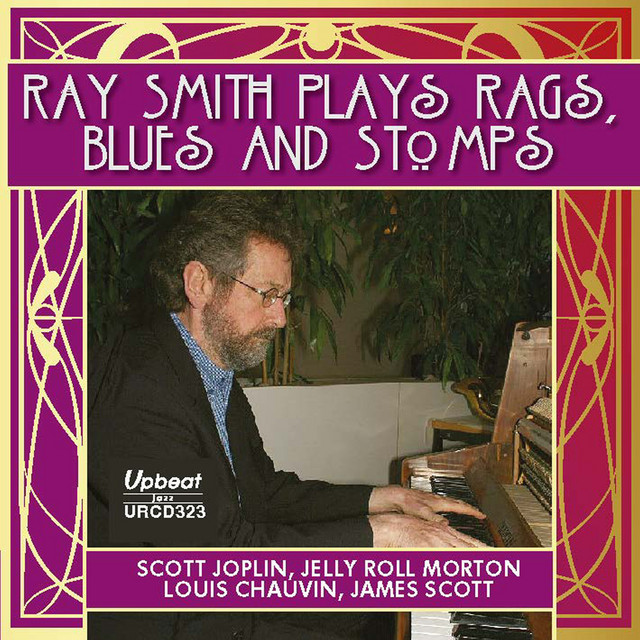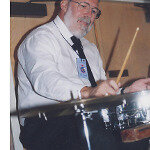 Since its inception, ragtime has appealed to dancers, who happily engaged in the one-step and the “animal” dances—the Bunny Hug, the Grizzly Bear, the Turkey Trot—which became all the rage. Almost all of ragtime’s composers were, and still are, pianists. It is also scored, especially when played by more than a solo pianist, leaving little room for improvisation, although many practitioners manage to insert a little in their interpretations.
Since its inception, ragtime has appealed to dancers, who happily engaged in the one-step and the “animal” dances—the Bunny Hug, the Grizzly Bear, the Turkey Trot—which became all the rage. Almost all of ragtime’s composers were, and still are, pianists. It is also scored, especially when played by more than a solo pianist, leaving little room for improvisation, although many practitioners manage to insert a little in their interpretations.
In addition to ragtime solo pianists, there were, and are still, entire ragtime “orchestras” performing it, some of them being the Paragon Ragtime Orchestra, the Peacherine Ragtime Society Orchestra, the Sedalia Ragtime Orchestra, and the New Orleans Ragtime Orchestra. It has also had, and still does, much appeal to traditional jazz bands, many of which have a few rags in their repertoires. Some of these bands have even issued entire albums of ragtime, witness Ken Colyer’s Ragtime Revisited, Chris Barber’s Elite Syncopations, Turk Murphy’s The Many Faces of Ragtime, or The New Sunshine Jazz Band’s Old Rags, to name several.
While ragtime is associated with the piano, either in composition or performance or both, somewhat ironically at least two of the fine band albums featuring ragtime, Chris Barber’s and Ken Colyer’s, were “pianoless.” In other bands which did have a piano and did feature rags, most often these were played by the piano alone; some, however, like the Yerba Buena Jazz Band, featured the piano joined by the rhythm section on rags. And on occasion even the full Yerba Buena band essayed rags, “Maple Leaf Rag” being one they recorded several times.
Among the many piano players performing ragtime today is Ray Smith* from the UK. Smith has also been a band pianist, appearing at different times with groups such as Rod Mason’s Hot Five, Steve Lane’s Famous Southern Stompers, and Ken Colyer’s All Stars. He has issued several solo albums, this being his latest, most of the tracks having been unissued previously. The majority of the tracks here feature ragtime compositions, the remainder being, as the album title says, Blues and Stomps.
(As well as being a musician, Ray Smith and the late Mike Pointon jointly authored the 2015 definitive book Bill Russell and the New Orleans Jazz Revival.)
Some nine of the rags are Scott Joplin compositions, the best known, perhaps, being “The Entertainer” (aka “The Sting” by non-jazz fans after its prominent exposure in the popular movie The Sting in 1973). Taken at a very slow, stately tempo for the opening strain, it then accelerates slightly with almost a boogie left hand for the second. Then it returns to the opening tempo with a repeat of the first strain. It closes by returning to the boogie rhythm—thus alternating between the two tempos.
Also heard in that movie are “The Cascades” and “Heliotrope Bouquet” (this latter a joint composition with Louis Chauvin), and in them we can hear the Latin tinge endorsed by Jelly Roll Morton. Finally, included on this CD, but not the movie, is another Joplin tune exhibiting the Latin tinge, “Solace.”
Of the other five by Joplin on this CD, perhaps the best known is “Maple Leaf Rag.” However, I consider “Bethena” one of the most beautiful of Joplin’s compositions, the first strain being plaintive and somewhat melancholy. The return to that strain to form the coda is quite moving. Smith’s passionate rendition of this piece, with its varying tempos, would be difficult to waltz to with ease, however.
Of the remaining rags, two—“Ragtime Oriole” and “Grace and Beauty”—are by James Scott; and there is one each by Arthur Marshall, Artie Mathews, and Ray Smith himself, who modestly includes a single contribution, “Silver Leaf Rag.”
The non-rag tracks are by Jelly Roll Morton and Bix Beiderbecke. Three of these are are Jelly Roll Morton compositions, two of them—“King Porter Stomp” and “Winin’ Boy Blues”—being quite familiar, and the third being one which one doesn’t come across very often, “Pep.” Bix’s track is “In a Mist,” which he composed—and recorded—on the piano, rather than the cornet. Most people who have heard that recording will probably agree that the piece is “a cool, pensive and mysterious song” with “strange but beautiful chords,” as one commentator put it. Smith does it justice here, maintaining these qualities.
While Ray Smith is not quite a household name in the US, he is deserving of more exposure. Perhaps this recording exhibiting his talent will help to remedy that deficiency. This album should appeal to both ragtimers and trad jazzers alike and is available on the Upbeat web site www.upbeat.co.uk
Born in Dundee, Scotland, Bert Thompson came to the U.S. in 1956. After a two-year stint playing drums with the 101 st Airborne Division Band and making a number of parachute drops, he returned to civilian life in San Francisco, matriculating at San Francisco State University where he earned a B.A. and an M.A. He went on to matriculate at University of Oregon, where he earned a D.A. and a Ph.D., all of his degrees in English. Now retired, he is a professor emeritus of English at City College of San Francisco. He is also a retired traditional jazz drummer, having played with a number of San Francisco Bay Area bands, including And That’s Jazz, Professor Plum’s Jazz, the Jelly Roll Jazz Band, Mission Gold Jazz Band, and the Zenith New Orleans Parade band; he also played with some further afield, including Gremoli (Long Beach, CA) and the Phoenix Jazzers (Vancouver, B.C.) Today he reviews traditional jazz CDs and writes occasional articles for several publications.






















